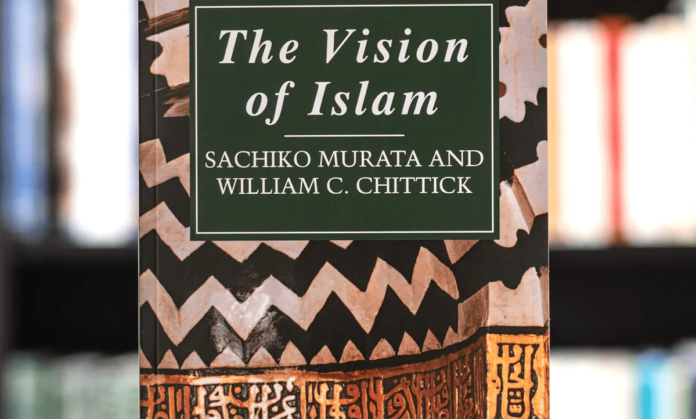Angels
As already discussed in a previous article that there are many kinds of angels—some who perform simple functions, and others who perform more complex functions. They need at least two wings, corresponding to their knowledge and their activity. But their activity may be subdivided into many different types. Notice that the verse says, “God increases creation as He wills.”[1] Some commentators say that this means God adds wings to his angels in keeping with their functions. They cite as evidence a hadith in which the Prophet said that he saw Gabriel with seven hundred wings. That sounds like a reasonable number of functions for one of God’s most important angels.[2]
Other Creative Components
Clay
The Koran employs the word clay in ways that suggest that it, like darkness, can be considered the opposite of light. Clay is water mixed with earth. The angels were created from light, but the human body was created from clay. If we thought that the Koran provided scientific information in the modern sense, we might understand it to mean that the body is made out of food, and food is basically water and earth that reaches us through the intermediary of plants and animals. Hence, the body is clay. No doubt this is one of the meanings of the teaching, but much more is at issue here. We have to ask what the Koran and the Islamic world view in general have understood by water, earth, and the clay that represents their combination.[3] We understand the essences of things by looking at their attributes. The attributes of clay are those of earth and water, plus an added something that results from the combination. Earth is heavy, dark, dry, and infinitely divisible. Water is also heavy, but it allows light to penetrate it, so it is not as dark as earth. Water is also infinitely divisible, but it holds together naturally as a single body. If you put water and earth together, you have a substance which is heavy and dark, but which has the potential to receive light, because of the water within it, and which also holds together rather well, especially if you bake it. In one verse the Koran says,
“God created the human being from dry clay, like pottery” (55:14)[4]
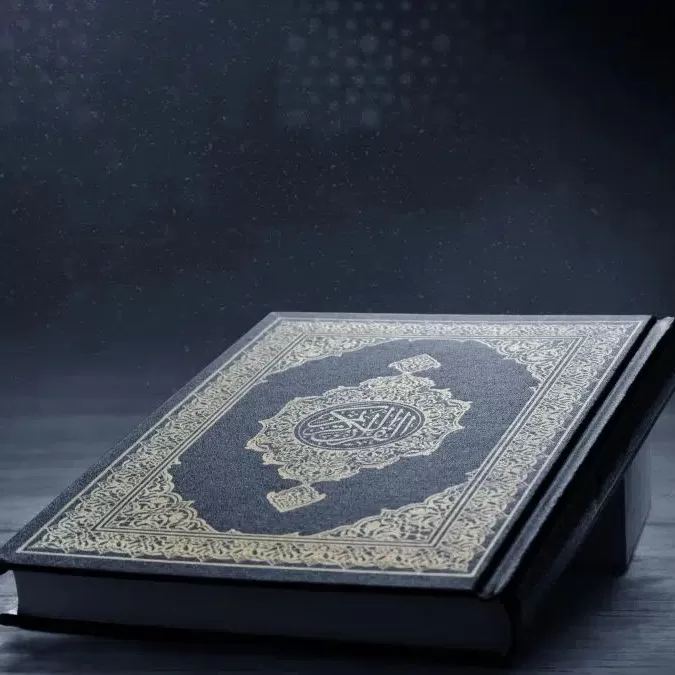
Earth and water have various qualities that are reflected in things made out of clay. For example, bodily things come in a variety of colors, and human beings are no exception. This has something to do with water and clay. Take the following Koranic verse:
Have you not seen how God sends water down out of heaven, and therewith We bring forth fruits of diverse hues? And in the mountains are streaks white and red, of diverse hues, and pitch black; people too, and beasts, and cattle—diverse are their hues. (35:28)[5]
Some of the Prophet’s companions connected this diversity of the color of the earth and people in a suggestive way. They reported that when God wanted to create Adam, he sent the angel Seraphiel down to earth to collect some soil. The earth, however, protested. It did not want to give up anything of itself (earthly creatures, especially humans, tend to be like that; they are very concerned about themselves and their integrity). The earth begged and pleaded with Seraphiel, who finally felt sorry for it and went back to God, asking what to do. God said it was not important. He would send another angel. So he sent Michael. But the same thing happened, and Michael came back empty-handed. Then God sent Gabriel, but it was the same story. Finally God sent Azrael, giving him special instructions. Azrael went down and explained to the earth that he was merely going to borrow some earth for a short period of time, and that he would take personal responsibility for returning it. Having received this guarantee, the earth agreed, and Azrael took handfuls of soil from the earth’s four corners, some of it red, some white, some black, and some yellow. God then took the earth and mixed it together with water and molded the clay of Adam. This explains the diversity of human colors, and it also explains why Azrael is the angel of death. It is his responsibility to return the earth to its proper place. Hence he has to take away the human spirit and give the earth back to its rightful owner.
Spirits and Bodies
Angels are made of light, (human) bodies of clay. This means that angels are luminous, invisible beings who share in the qualities of divine light, such as life, knowledge, and power. In contrast, bodies are dark, visible things, which—relative to angels—have none of the characteristics of divine luminosity. They are dead, ignorant, and weak.
If bodies are dead, why do we see so many of them walking around? In the case of human beings, the Koran tells us that God gave life to Adam’s clay by blowing something of his own spirit into it: “He originated the creation of the human being out of clay, . . . then He proportioned him and blew into him of His spirit” (32:9).
Human bodies are alive because the divine spirit animates them. Without the spirit, they would be water and earth. When Azrael takes away the spirit, the body shows its true nature, since it returns to dust. Muslim thinkers agree that in nonhuman animals and plants also, qualities such as life and desire pertain to spirit and not to the bodies themselves.
What then is spirit? We are given some hint by the Arabic word itself, ruh, which derives from the same root as rih, which means “wind.” A wind is something whose presence is made visible only through its effects. It makes a tree’s branches move, or picks up dust, or presses against the face. We know that it is there, but we cannot see it; we only see or feel its effects. So also a spirit (from Latin spiritus, also meaning wind) cannot be seen, but it makes its presence felt by its effects. A body, which is water and earth, shows all the signs of life. A sleeping and a dead body may appear the same, but there is an enormous difference between the two. The difference lies in that invisible something that is called a “spirit.”
Spirits are akin to angels. The Koran makes this clear by sometimes referring to Gabriel as the “Holy Spirit.” It also refers to “the Spirit,” which the commentators say is the greatest of the angels. Most authorities maintain that angels are a kind of spirit, but that the word spirit is broader in meaning, because not all spirits are angels.
One way to explain the difference between spirits and angels is to say that all spirits are connected to bodies, but not all bodies are made of the same substance. If the spirit is connected to a body made of light, then the configuration of the two is called an angel, but if the spirit’s body is made of clay, then it is the spirit of an animal or a human.
Some authorities maintain that plants and inanimate objects also have spirits, while others say special angles are given charge of them. In either case, the basic point is that physical things cannot exist without some spiritual reality acting as an intermediary between them and God.[6]
The basic function of a spirit is to govern and control a body. No bodily thing can hold together without a spirit or an angel to give it wholeness and coherence. After all, bodily things are made of clay, which breaks down easily and has no inherent unity. Baked clay may appear solid, but it can be smashed. In contrast, spirits are made of light, which is a single reality—the radiance of God. The light is one, as the Koran frequently reminds us, but the darknesses are many. The many cannot hold together since they do not consist of a unified reality.
The Koran makes allusions to the idea that each level of structure in the universe is governed by specific spirits. For example, it is clear that the human spirit results from God’s blowing his own breath into the human body. The human spirit gives wholeness and integrity to a collection of cells, organs, and bodily parts. But each of these parts has a certain independence, which is maintained by the spirits of the individual organs.
The Koran refers to this independence in several verses in which it is discussing the day of resurrection, when people are questioned about their activities in this world. Since this is a judgment, comparable to a court of law, witnesses are called. Among those witnesses are angels. But the bodily organs and limbs will also witness against their owners, thus showing that each has an autonomy that is difficult to explain in Islamic terms unless each organ has its own governing spirit:
There awaits for them a mighty chastisement on the day when their tongues, their hands, and their feet shall witness against them concerning what they were doing. (24:24)
Today We set a seal on their mouths, and their hands speak to Us, and their feet bear witness as to what they have been earning. (36:65)
It might be asked how all spirits can be differentiated and at the same time be held together by greater spirits. One way to answer this question is to study the signs in the human self.
“In the earth are signs for those having certainty,and in your own selves. What, do you not see?” (51:21).
Just as we can compare the whole universe to a book, so also we can compare the human being to a book made up of letters, words, sentences, and so on. Each cell of the body can be compared to a letter. A letter takes a specific shape so that it can express a meaning; it is not a haphazard line. The spirit of that letter gives it its shape. On the next level, letters join together to form words, which themselves have an integrity and wholeness, given to them by their governing spirits. These words can be compared to the various subunits that make up the bodily organs.
Then each organ of the body performs a specific function; each is a sentence within the human body, while the body itself is a paragraph. But the paragraph expresses meaning only within the context of a chapter, which we can take as a family. Then the chapter has a role to play within the context of a book, which is the human race. Letters, words, sentences, paragraphs, chapters, and books can be studied on their own level, but the meaning of each level only becomes clear when it is situated in a broader context. By themselves, letters are simply alphabet soup. Only when words are formed do they make any sense. But words do not really have meaning outside the context of sentences, and sentences are incomplete unless situated within still larger units such as paragraphs and chapters.
From the Islamic perspective, it is ridiculous not to recognize the “wholes” that hold together the parts. If we stop at any level, we miss the greater meaning. Ultimately, even to understand the full significance of a single letter, we have to be able to read the whole book.
And the author of the book is God, which is to say that tawhid provides the book’s final meaning. We can understand the letters, words, and sentences outside the context of the book’s author, but we will be missing the message if we do so. We will be like our imaginary chemists who say that the meaning of the Mona Lisa lies in the composition of the paint. Each level of coherence and meaning (such as letters, words, and sentences) is built into the structure of existence. Each can be grasped by human intelligence, which itself partakes of the nature of the greatest of all spirits, the spirit of God blown into Adam. It is significant that one of the several words often employed synonymously in Islamic texts for spirit is meaning (ma`na). The spirit is that which gives meaning, coherence, unity, and comprehensibility to a thing. But there are many levels of spirits, distinguished by the extent to which they comprehend and embrace lower realities. The spirit of a cell is one thing, of an organ something else, and the spirit of the human being as such—the rational or divine spirit—is the supreme organizing principle that holds all the lesser spirits together.
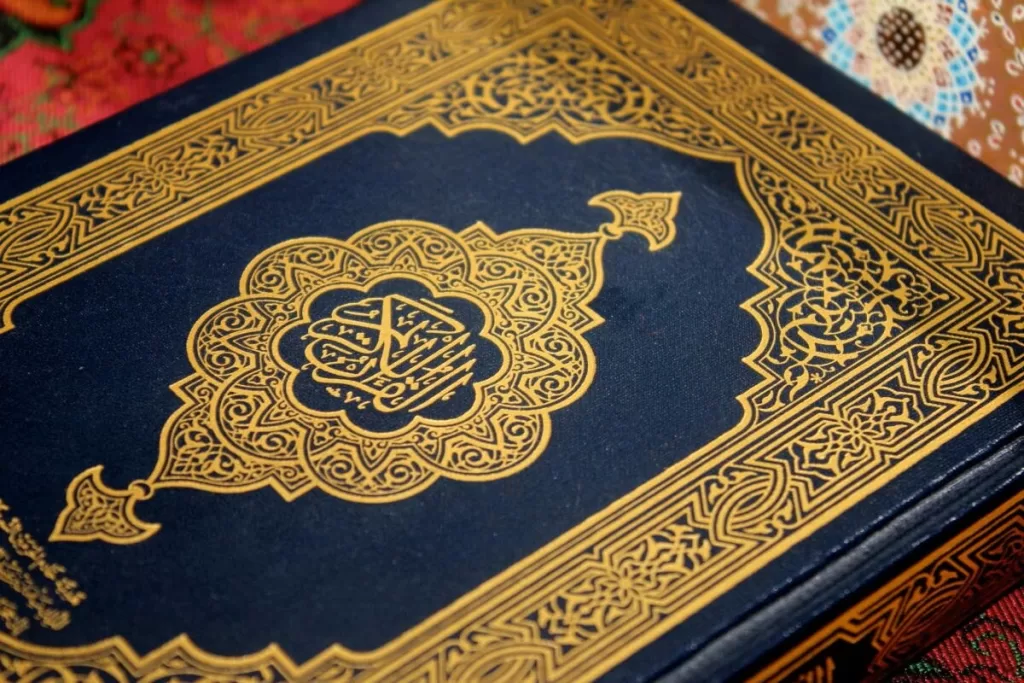
Spirits do not make sense outside the context of bodies. In traditional Islamic texts, to say “body” is to imply “spirit,” and vice versa. Just as we can only speak of darkness in relation to light, and just as light can never be seen unless darkness is present, so also body and spirit are inseparable. Even a dead body or an inanimate thing is governed by a spirit, and the soul that departs from the body at death does so in a subtle bodily form.
The primary attribute of spirit is usually said to be life. If, on the one hand, mention of spirit calls to mind body, on the other hand it calls to mind life. In the Persian language, for example, jan means both “spirit” and “life.” The reason is clear. Without the spirit, the body is dead. Or rather, it is simply clay.
Clay cannot have life until God kneads it, shapes it, and blows his spirit into it. God, of course, does not have to knead it directly. He uses intermediaries to do his work. In the case of an animal, he normally kneads the clay in the womb of its mother. According to a hadith, the human infant is not sufficiently shaped to support a spirit until the fourth month of pregnancy. Only after four months does God blow his spirit into the embryo.[7]
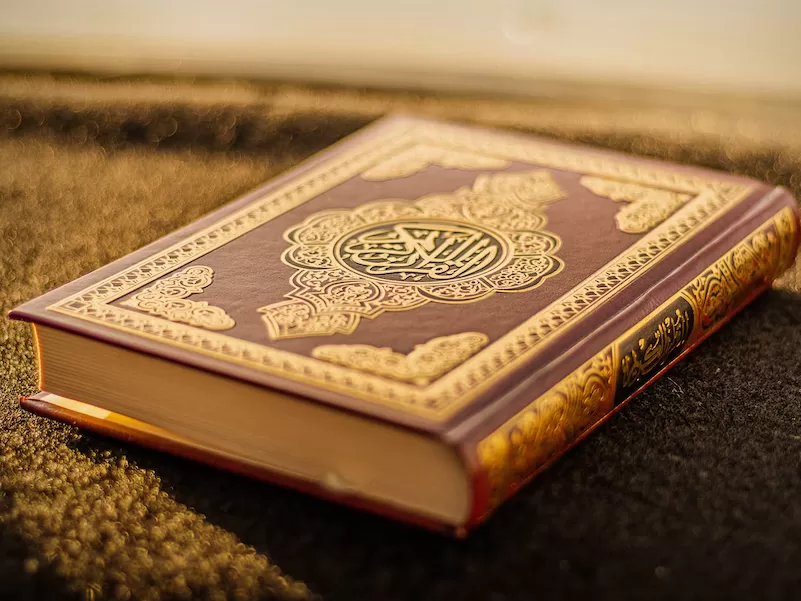
The spirit belongs to God, just as light and life belong to God. There is no life but God’s life, and no light but God’s light. So also, all the characteristics of the spirit are divine characteristics. Otherwise, God would not have referred to the human spirit as “My spirit.” Nevertheless, most theologians maintain that the spirit is a created reality. Although it belongs to God, it is not identical with God. In the same way, angelic light is the radiance of God, not God himself.
It is important to grasp the characteristics of the spirit. Without knowing what the spirit is, we cannot know what the body is, since body and spirit are defined in terms of each other. We already said that the spirit is luminous and alive, and of course, invisible, like light and angels. Notice that Light, as a name of God, is usually said to be a name of God’s essence, of his very self. What is God? Light. Once, when the Prophet was asked if he had seen God, he replied, “He is a Light. How could I see Him?” If the spirit is light, that means, in respect of tashbih, that it possesses all the attributes of God’s essence, all the characteristics denoted by his names.
Hence, in itself, the spirit is alive, knowing, desiring, powerful, speaking, generous, just, compassionate, loving, and so on. If you object that most people, though they have spirits, do not display such qualities as generosity and justice, the answer is simply that people are not only spirits, they are also bodies. God breathed his own spirit into the clay, and the result was human beings. Are people spirits? Yes and no. Are they light? Yes and no. Are they clay? Yes and no. Do they have knowledge? Yes and no. Are they generous and just? Yes and no.
In short, when we speak about the meeting of light and clay in human beings and other creatures, we are simply explaining in different languages the two principles of tanzih and tashbih[8]. In respect of their spirits, people are similar to God, but in respect of their bodies, they are incomparable with God. Of course, in another respect, the spirit is also incomparable and the body is also similar. But here we are simply discussing the dominant characteristics of the two sides.
The spirit is dominated by the characteristics related to tashbih. Hence, it is closely connected with nearness, mercy, gentleness, beauty, and bounty. In contrast, the body is dominated by the attributes of tanzih. Hence, it is connected with distance, wrath, severity, majesty, and justice.
The fact that the body functions more as a sign of the attributes of wrath than the attributes of mercy does not amount to a denigration of the body. All these attributes associated with the body, after all, are divine attributes. It is true that mercy takes precedence over wrath, and this explains why the spirit is, in a sense, superior to the body.
But spirits must have bodies in order to display the attributes of mercy and beauty. If human bodies were made of light instead of clay—that is, if the bodies themselves were of a spiritual nature—people would be angels, not human beings. If they were angels, they could not achieve the greatness for which they were created. (We will come back to God’s goal in creating human beings shortly.)
Created light is the opposite of created darkness, which is to say that the attributes of spirit are the opposites of the attributes of clay. The attributes of spirit are the divine attributes, although the beautiful and merciful attributes predominate. The primary attributes of God, when envisaged in relation to creation, are often said to be life, knowledge, desire, power, and speech. These qualities are inherent to the spirit, but they are not found to any appreciable degree in the body.
Spiritual things such as angels are alive, knowing, desiring, powerful, and speaking by their very nature. Again, these qualities are not absolute, since spirits are dead and ignorant compared to God. When we discuss spirits, we have in mind their contrast with bodies. The words spirit and body, as said above, form a conceptual pair, so you cannot discuss one without at least implicit reference to the other. In contrast to spirits, bodies—such as stones or corpses—are dead, ignorant, desireless, weak, and mute. As for living bodies, they are not simply bodies, since the presence of life proves that a spirit is present within the body. However, the life and knowledge of living bodies are pale compared to the pure life and knowledge of spirits. The combination of spirit and body in effect produces a third thing that is neither spirit nor body, but something in between.
In order understand the nature of that third thing, it will be useful to go back to the contrast between angelic light and bodily clay. Angels are created of light, while bodies are created of clay. The Koran also speaks of certain kinds of beings who are made neither of light nor of clay, but of fire. Notice that fire is luminous and dark at the same time. Fire ascends toward heaven, yet it is earthly. Fire can never be separated from clay, since it needs a fuel to burn. Fire rises up, as if striving for the freedom of light, but it never escapes its clay.
If we change the composition of the clay—the material fuel—we can modify the nature of the fire. Green wood burns differently from dry wood or gasoline. If we mix in various salts and other substances derived from earth, we can easily change the color of the fire.
Most often the Koran refers to the creatures made from fire as jinn, a term that means “hidden, concealed.” It says a good deal about these jinn, and one could write a book simply investigating these Koranic statements. Here we will simply say that the jinn are ambiguous creatures, somewhat like human beings, and somewhat like angels.
The most famous member of the jinn race is Iblis, also known as Satan. His career epitomizes the ambiguity of the jinn. Most accounts say that he was the first of the jinn to be created, and hence he plays a role for the jinn like that of Adam for human beings. For thousands of years before the creation of Adam, Iblis was extremely pious and spent all his time in acts of devotion.
The angels, the Koran tells us, dedicate their lives to serving God and to praising and glorifying him. They never forget God, so they are always striving to show their gratitude to him by mentioning his greatness, grandeur, and kindness. When Iblis was created, his luminous nature drew him toward the angels, and he joined in their activities. Gradually, his tremendous devotion brought him into a select group of servants.
Although he was created of fire, God allowed him to mix freely with the creatures created of light. Everything went well until God created Adam. Iblis watched the whole process, observing how Adam’s clay was collected and how God kneaded it for forty days. But he seems to have missed the crucial event, when God blew of his own spirit into Adam. After all, the spirit is invisible, and God is even more invisible, so even careful observers might miss some of the subtleties.
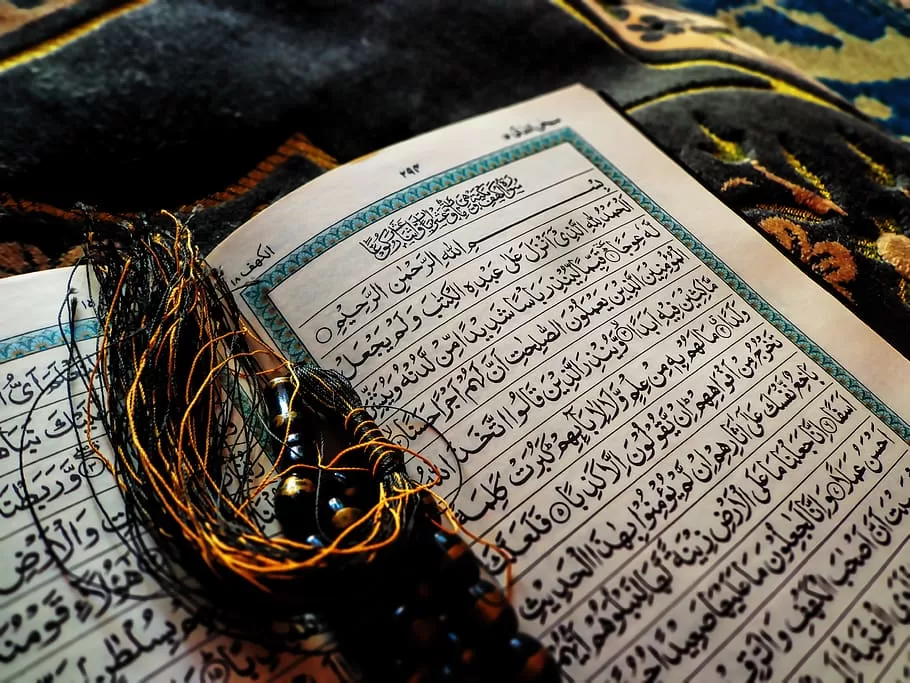
Having created Adam, God said to all the angels—and of course Iblis by this time was standing in their ranks—
“Prostrate yourselves before Adam” (2:34, 7:11, and elsewhere).
They all did so immediately, since the angels
“do as they are commanded” (16:50).
But Iblis was not an angel, so he could disobey if he wanted. And on this occasion, for the first time in his life, he decided to do just that.
God said to Iblis, “What prevented you from prostrating yourself to him whom I created with My own two hands?” Iblis replied, “I am better than he. You created me of fire, but You created him of clay” (7:12, 38:76).
(The great Persian poet and sage Rumi suggests that Iblis had only one eye, and with that eye he saw Adam’s clay, but he was lacking a second, different kind of eye, to see Adam’s divine spirit). From here on, the story is well known. God sent Iblis down out of heaven in disgrace, and Iblis busied himself with trying to deceive the children of Adam. We will return to these events later, since they provide important keys for understanding Islamic anthropology.
For now, it is sufficient to note that Iblis has both the luminous nature of angels, and a dark, deceptive, and devious nature that can only come from a lack of light. This dark nature shares darkness with clay, but it possesses something that clay does not have.
Clay, after all, is neutral. There is nothing evil about clay. It is a good substance for making pots (if you are a potter) or bodily things in general (if you are a god). Clay has its drawbacks. It is dark and dense, so when you pour liquid light into the cup, the light is hidden, and some people might imagine that the cup is empty. But without pots, you would have no containers for light. Clay is not devious and deceptive, it is simply dull.
When spiritual luminosity mixes with the impermeability of clay, one result may be a perverted, deceiving game of light and shadow, a game that can lead ever further into the world of darkness. Iblis represents this possibility.
Nevertheless, fire does not have to go bad. The Koran makes clear that there are jinn who have faith in the prophets and, in general, the tradition differentiates between the faithful jinn and the truth-concealing jinn. The latter are called satans, while their chief is Iblis, called in Arabic the Satan (al-shaytan).
Fire is ambiguous. If light dominates in its nature, then it is similar to the angels and participates in God’s mercy and gentleness. If darkness dominates, then it is distant like bodies and falls under the sway of the names of wrath and severity. Fire in any case tends more toward wrath than toward gentleness. It rises up and asserts its own power and wants to wipe out everything in its path.
Translated into a human (or satanic) attribute, fire becomes self-assertive arrogance. Iblis says, “I am better than he.” Satan’s game is “Me, me, me.” Do your own thing—follow caprice and ignore your God-given intelligence.
Fire’s negative nature is nicely summed up in the Koranic word istikbar, which means “to seek greatness, magnificence, or eminence.” From the same root we have the word akbar meaning “greater.”
“God is greater” is one of the most common formulas heard on Muslim lips, and it marks every movement of the salat. It means simply “There is no greatness but God’s greatness.”
Everything that appears great in your eyes is small compared to God. From the same root we also have the divine name al-mutakabbir, “he who is great in himself,” or “the Magnificent.” As a human quality, the word means “arrogant,” since no one deserves magnificence but God.
Iblis and those human beings who have the qualities of fire seek greatness and magnificence for themselves. Like fire, they assert their own reality and try to destroy that of others. The Koran ascribes this quality of claiming greatness to Iblis, to Pharaoh and his council, and to truth-concealers in general.
All of them will be thrown into hell, which is precisely a fire that corresponds to their own nature. The fact that Pharaoh was drowned in the sea is certainly an appropriate worldly end for fiery claims.
Then the angels prostrated themselves [before Adam] all together, except Iblis.
He claimed greatness and was one of the truth-concealers. (38:74)
And [Pharaoh]
claimed greatness in the land, he and his hosts, wrongfully. . . . Therefore We seized him and his hosts, and cast them into the sea. . . .
And We appointed them leaders, calling to the Fire. (28:39-41)
Those who cry lies to Our signs, and claim greatness against them—those shall be the inhabitants of the Fire. (7:36)
Just as the Koran attributes the act of claiming greatness to Iblis and his followers, so also in several verses it negates it from the angels.
Those who are with thy Lord do not claim to be too great to worship Him(7:206)
The angels — they do not claim greatness. They fear their Lord above them, and they do as they are commanded. (16:49)
Next … “Soul” … To be continued ……
Book Reference: Vision of Islam[9]
[1] Quran 35:1 : https://www.islamawakened.com/ quran/35/1/default.htm
[2] “The Vision of Islam” authored by Dr. Sachiko Murata and Dr. William C. Chittick https://defencejournal.com/2024/10/10/the-visionof-islam-9/
[3] Tao of Islam: A Sourcebook on Gender Relationships in Islamic Thought (Albany, N.Y.: SUNY Press, 1992), chapter 4 and passim.
[4] https://www.islamawakened.com/quran/55/14/default.htm
[5] https://www.islamawakened.com/quran/35/28/default.htm
[6] For an early version of this story, see Franz Rosenthal, History of al-Tabarî, vol. 1 (Albany, N.Y.: SUNY Press, 1989), pp. 258-59.
[7] See B. Musallam, Sex and Society in Islam: Birth Control Before the Nineteenth Century (Cambridge: Cambridge University Press, 1983).
[8] Tanzih and Tashbih: https://defencejournal. com/2024/07/10/the-vision-of-islam-6/ اردو ترجمہ مکمل کتاب :Islam of Vision] 9[ http://www.williamcchittick.com/wp-content/ uploads/2019/06/Chittick-and-Murata-Vision-of-Islam-Urdu-Translation-by-Muhammad-Suheyl-Umar. pdf
[9] http://www.williamcchittick.com/wp-content/ uploads/2019/06/Chittick-and-Murata-Vision-of-Islam-Urdu-Translation-by-Muhammad-Suheyl-Umar. pdf


